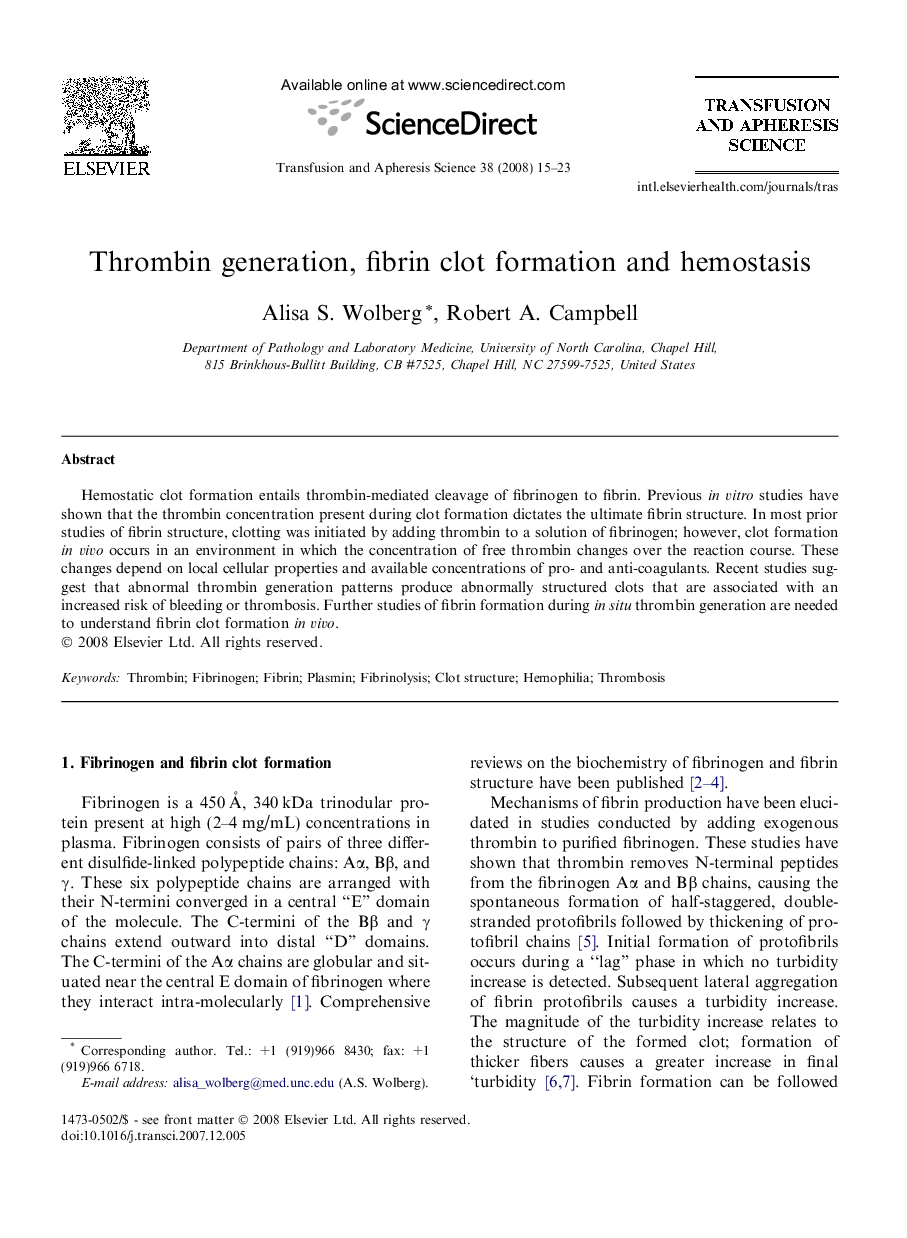| Article ID | Journal | Published Year | Pages | File Type |
|---|---|---|---|---|
| 3336061 | Transfusion and Apheresis Science | 2008 | 9 Pages |
Hemostatic clot formation entails thrombin-mediated cleavage of fibrinogen to fibrin. Previous in vitro studies have shown that the thrombin concentration present during clot formation dictates the ultimate fibrin structure. In most prior studies of fibrin structure, clotting was initiated by adding thrombin to a solution of fibrinogen; however, clot formation in vivo occurs in an environment in which the concentration of free thrombin changes over the reaction course. These changes depend on local cellular properties and available concentrations of pro- and anti-coagulants. Recent studies suggest that abnormal thrombin generation patterns produce abnormally structured clots that are associated with an increased risk of bleeding or thrombosis. Further studies of fibrin formation during in situ thrombin generation are needed to understand fibrin clot formation in vivo.
